

 The South African
The South African
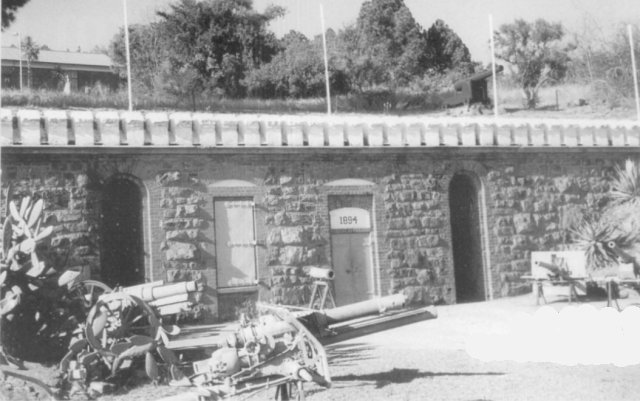
Figure 1: The Green Magazine (Photo: D C Panagos, 2000)
Of all the forts which have been built around Pretoria since the name was first placed on the world map in 1855, the remarkable Fort Commeline stands in a class of its own. A portion of its remains are still to be found on Magazine Hill which lies to the southwest of the Pretoria Railway Station. It is opposite the Voortrekker Monument and just west of present-day Potgieter Street. The valley between Magazine and Monument hills was known as Skietpoort or South Poort and, at the time, the wagon road from Heidelberg ran through a drift at Six Mile Spruit (Hennops River) to join, further north, the road from Potchefstroom. At approximately the site of the present Prison, the rough dirt track angled north-eastwards towards the junction of Visagie and Paul Kruger streets, then known as Markstraat. It was a little further along this way, on a rise commanding the town and Poort, somewhere in the middle of Jacob Mare*, between Paul Kruger and Bosman streets, that the British Army built a fort. It is mentioned in E F Sandeman's book, Eight months in an ox-wagon (1975 reprint, p 124). When Sandeman and his hunting partners arrived in Pretoria via Skietpoort in 1878, he records that their wagons passed a fort ' ... on a rising ground above [the tents]' where the red-coated soldiers of the 13th Regiment of Foot, the Somerset Light Infantry, were on duty. At the time of the 1880/1 Siege of Pretoria, it was known as Fort Royal.
[* Dr H M Rex suggests a little further north towards Minnaar Street, Pretoria.]
Apart from this fort and the Artillery Camp, Pretoria had no other defences when the Boers chose to rise in rebellion on 13 December 1880 after many months of fruitless negotiation with Gladstone's British Government. The garrison was commanded by Colonel Gildea of the 21 st Regiment, the Royal Highland Fusiliers, and it was decided that Lieutenant Commeline, Royal Engineers, should build two forts on the hills to the south of the town. Commeline placed one on what was later to become known as Magazine Hill to the east of Skietpoort and commanding the road leading into the town. The other he built on the hill behind the present Railway Station, known as Timeball Hill.
Both forts consisted of rough fieldworks with a fieldstone foundation topped by rows of sandbags with loopholes. Both had emplacements for a 4-pounder Krupp gun, the Army having taken over these guns from the former Republican government. Lieutenant Commeline named the fort on the western hill after himself and also commanded the small detachment of soldiers at this fort.
The second fort was named Fort Tullechewan. This has a small sunken 'Ammunition Locker' at floor level which was intended for the safe storage of bags of black powder propellant as well as small shells for the Krupp gun. It measures 3ft by 2ft (1m by 0,7m) and can still be viewed, although the lid for the locker is no longer there. Presumably Fort Commeline had a similar locker for the ammunition for its 4-pounder gun. Water supplies were delivered and stored in wooden barrels.
The forts had a chevaux de frise (protective barrier) of thorn bushes set in a low stone wall which may have been bound together with barbed wire. The row of stones which contained the thorn bushes can still be seen on the south side of Fort Tullechewan.
After the British Army was rapidly humbled at the successive battles of Bronkhorstspruit, Laings Nek, Ingogo (Schuinshoogte) and finally Majuba in 1881, the Boers regained their Republic. After striking the Union Jack, Lt Commeline and his garrison marched away, leaving Fort Commeline. This first fort became derelict, its only purpose perhaps to accommodate a family of dassies who would probably have happily accepted this novel and pleasant accumulation of warm stones.
In 1894, the Zuid-Afrikaansche Republiek (ZAR) decided to acquire more armaments and they built an ammunition magazine on the west side of what was later to become known as Magazine Hill. This is known as the Green Magazine and it is now the headquarters of the Transvaal Staatsartillerie Regiment (see Figure 1). After the abortive Jameson Raid in 1896, an accelerated programme of arming the ZAR was put into effect with the importation of field and siege guns from firms in Germany and France and an even larger store was built to house the ammunition. This was known as 'die Sentraalmagazyn' (Central Magazine - see Figure 2).
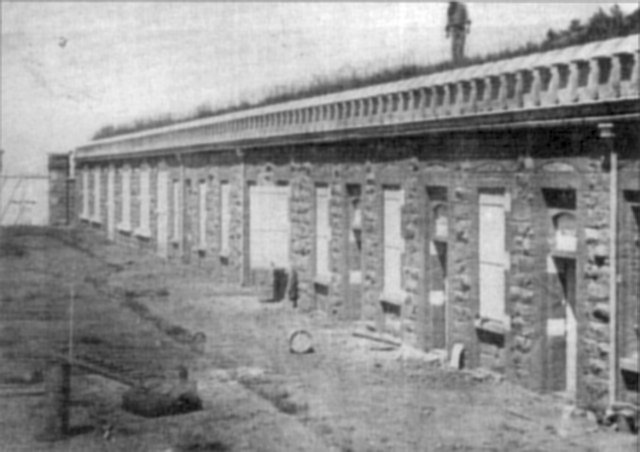
Figure 2: Sentraalmagazyn during construction. It had eleven compartments
with lamp passages between each. (Photo: By courtesy, SANMMH).
This magazine was built just below the hill on the western side, some distance from the Green Magazine. In order to protect these important targets from any treasonous attack from Johannesburg, Fort Commeline was revamped. A long pathway with high walls to afford protection against rifle fire, but no roof, led from the magazines up to the fort to enable reinforcements from the magazine detachments to hurry to the aid of the garrison at the fort in case of a heavy attack. The pathway walls did not have loopholes and were in excess of 1,5m high. It has sometimes been assumed that this path was part of Fort Commeline, leading to the Camp, but Lt Commeline never had sufficient manpower, time or the tactical need to build these two massive walls (see Figure 3). Thus, Fort Commeline had changed its shape as well as its colours!
It seems that because it was masked by Monument Hill, Fort Commeline, in its second role, did not play any part in the defence of Pretoria on 4 June 1900 when Lord Roberts attacked the town nineteen years after the initial siege. Most of the action centred on the present No 1 Military Hospital Hill and Asylum Hill where the ZAR Staatsartillerie had placed its field guns. After the British Army marched, unopposed, into the town the next morning along the Skietpoort wagon road, they took over the four Republican forts of Skanskop, Klapperkop, Wonderboompoort and Daspoortrand which had been built between 1896 and 1898. Soon after this, they proceeded to take over a further eight supplemental redoubts around the town and our fort now became known as Magazine Redoubt.
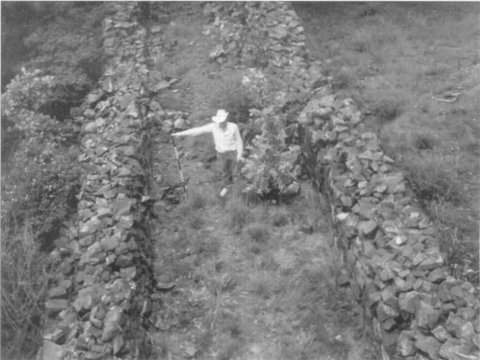
Figure 3: 'The covered way': Parallel stone walls leading from the magazines
to the ZAR Fort on Magazine Hill (Photo: DC Panagos, 1991).
At Magazine Redoubt, the British soldiers built stone walls around a perimeter of approximately 6,5m in diameter incorporating both earlier structures. Some parts of these walls are still visible despite the fact that a modern water reservoir has been built right in the middle of the fort. It is axiomatic that water engineers, radio engineers and military engineers invariably choose the same height or hill for their particular needs. Magazine Redoubt was the third fort to stand on the hill and it had once again changed its colours.
Figure 4: Foundations of the square, corrugated iron blockhouse,
So far none of the forts on the hill had ever been involved in any action with an enemy. On 1 March 1945, however, at 02.57, a tremendous explosion rocked Pretoria. The Grand Magazine - previously known as Sentraalmagazyn - had exploded with a thunderous roar. It's concrete and steel roof, together with shells and cartridges, was blown high into the sky. It must have taken platoons of Union Defence Force soldiers several days to collect the unexploded shells, cartridges and bullets which had rained down on the hill and the fort. The Official Enquiry into the cause of the explosion considered the possibility of sabotage but eventually recorded its finding that it was most probably the result of lax maintenance and storage that had allowed ageing explosives to decompose to the point where they had self-ignited. Some witnesses at the Enquiry had referred to a sudden intense blue/red flame preceding the double explosion.
The steel I-beams from the roof had flown in all directions and one landed next to the fort, now missing its Blockhouse, on top of the hill. A marking on this beam indicates that it had been made at a German steelworks, Roechling (see Figure 5). This firm, still in existence, is now a large financial bank. 'NR 28' is an indication of the tensile strength of the steel in the I-beams. This was a standard test which shows that a 1 mm diameter wire of this steel was able to withstand a strain of 2,8kg.
Figure 5: The explosion at the magazine sent this torn and
A photograph taken at the time of the Enquiry into the causes of the explosion shows another beam which had landed on a Second World War medical stores building, approximately 730m from the explosion (see Figure 6). Figure 7 shows a slab of heavy gauge corrugated iron-one of several hundred which, together with the steel beams, had supported the 0,5m thick concrete roof of the magazine.
Figure 6: This steel I-beam was hurled from the magazine by the force
Sadly, the death toll from the explosion was 34 people, including young women, who had been working shifts in the nearby buildings known as the Mint Loading Field. Here, .303 rifle cartridges were being filled with cordite. Just two short months later, the War in Europe was over. It would be very fitting if some form of memorial, registering their names, could be placed at the Green Magazine.
Ever since that fateful night, Fort Chameleon has been at peace.
Acknowledgements
Return to Journal Index OR Society's
Home page
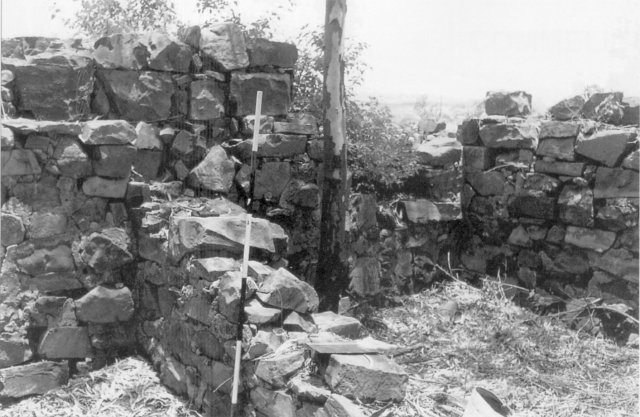
the modification made to the Magazine Redoubt in early 1901 (Photo: DC Panagos, 1991).
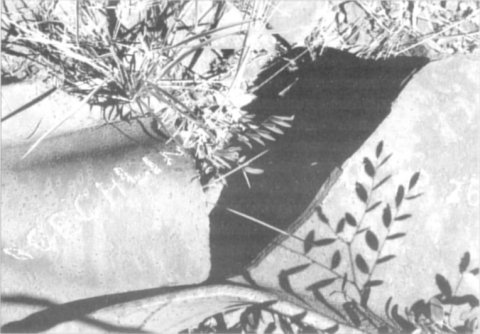
crumpled piece of steel I-beam high into the air. It landed next
to the fort on top of the hill. It is marked 'ROECHLING NR 28'.
(Photo: D C Panagos, 2003).

of the explosion and embedded itself into the wall of the Medical Store.
(Photo: By courtesy, SANDF Archives, Pretoria).
Grand Magazine explosion casualties:
Deaths 34 Mint Loading Field buildings 31 Prison Reserve (adjacent) 3 Injuries 231+
I would like to express my sincere gratitude to Capt Prinsloo and Mr Steve de Agrela of the South African National Defence Force Documentation Centre, Ms Gerda Viljoen in charge of the Photographic Archives of the South African National Museum of Military History, and Prof Ramon Hummel, for many of the different aspects of the history mentioned in this article.
Bibliography
Bellairs, Lady, The Transvaal War, 1880-1881 (W Blackwood, 1885).
Van Vollenhoven, A C, "n Oorsig van die Militêre Fortifikasies van Pretoria, 1880-1902',
Research: National Cultural History Museum, Volume 3, 1994.
Fielden, H, Chief Inspector of Explosives, 'Enquiry into the Circumstances Attending an Accident by Fire and by Explosion at the Grand Magazine and South African Mint Loading Field on the 1 stof March 1945', 17 September 1945, held in the South African National Defence Force Documentation Centre, Pretoria.
Sandeman, E F, Eight months in an Ox-wagon (Africana Reprint Library, Volume 1, 1975).
Jackson, Maj H M, Royal Engineers, Map of Pretoria: Field Intelligence Department Pretoria, July 1900. (June 1900. Geological Survey; Kynaston and Hall 1904-5).
Maurice, The Official History of the War in South Africa (HMSO London, 1904) .
Regulations for the Care and Preservation of War Materials and for Magazines (HMSO London, 1902).
Roechling online website - www.roechling.de/die/history - accessed by Prof Ramon Hummel, Vienna University, 2003.